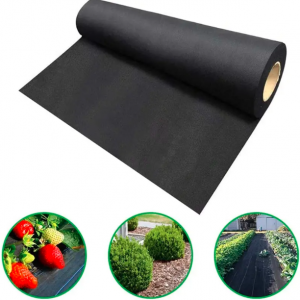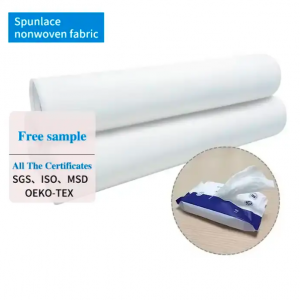In recent years, people have become increasingly concerned about the impact of various industries on the environment. The textile industry, in particular, has come under scrutiny for its contribution to pollution and waste. However, amid these challenges, the emergence of nonwovens offers a sustainable solution that promises a greener future.
Nonwovens are made by bonding fibers together through a mechanical, thermal or chemical process and do not require weaving or knitting. This unique composition and production method makes nonwovens extremely versatile and environmentally friendly.
One of the main advantages of nonwoven fabric is its ability to be produced from recycled or biodegradable materials. Traditionally, textiles have been made from natural fibers such as cotton or synthetic fibers derived from petrochemicals. The production of these materials consumes large amounts of water, energy and chemicals, causing serious environmental degradation. In contrast, nonwovens can be manufactured using recycled fibers from discarded clothing or textiles, minimizing the need for new raw materials and reducing waste.
Additionally, nonwovens have a lower carbon footprint compared to traditional textiles. The production of nonwovens consumes less energy and releases fewer greenhouse gases. In addition, the nonwoven manufacturing process requires fewer chemicals, reducing the impact on air and water pollution. This makes nonwovens a more sustainable alternative for the textile industry, helping to mitigate climate change and protect our natural resources.
Nonwovens also offer significant advantages in terms of durability and longevity. Traditional textiles often wear out after repeated use and washing, leading to increased waste and the need for frequent replacement. Non-woven fabrics, on the other hand, last longer and can withstand rigorous use without losing their integrity. This durability reduces the need for new textiles, thereby reducing waste and production consumption.
In addition, non-woven fabrics are versatile and versatile, further enhancing their environmentally friendly qualities. It is commonly used in surgical masks, gowns and drapes in the medical field. Due to its excellent filtration properties, it is also used in air and water filtration systems. In addition, nonwovens are used in various industries such as automotive, construction and agriculture, providing lightweight, strong and sustainable solutions.
In summary, nonwovens offer sustainable solutions for a green future. Made from recycled or biodegradable materials, it has a lower carbon footprint, is durable and versatile, making it an attractive alternative to traditional textiles. By adopting nonwovens in various industries, we can reduce waste, conserve resources, and contribute to a more sustainable and eco-friendly society. However, it is important to continue to invest in research and development to further improve the production methods and properties of nonwovens to ensure their widespread adoption and maximum positive impact on our environment.
Post time: Sep-14-2023


